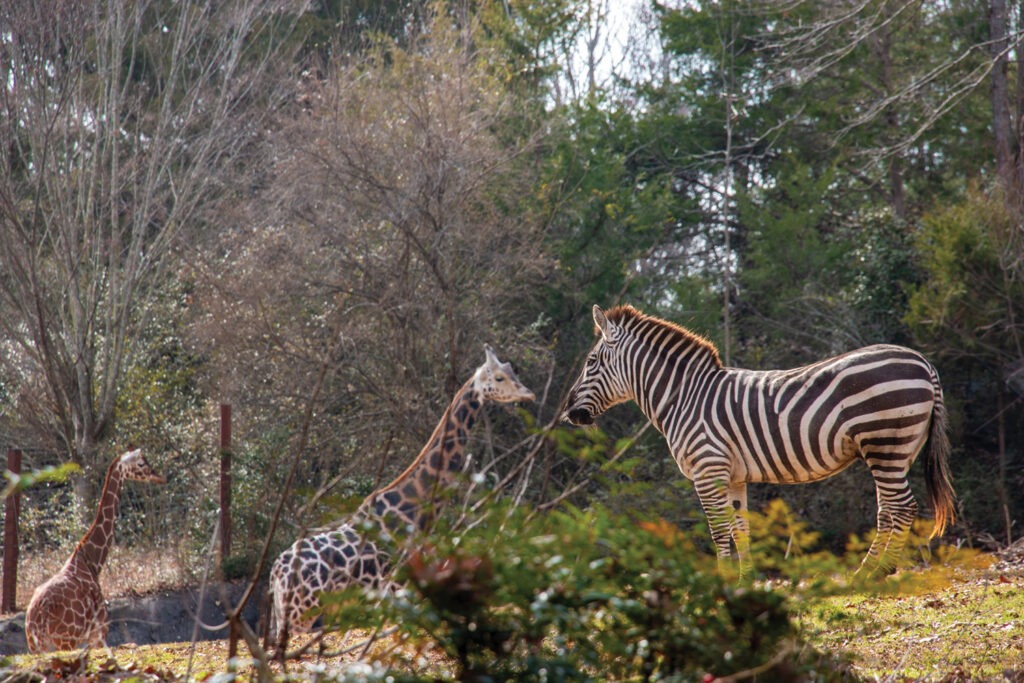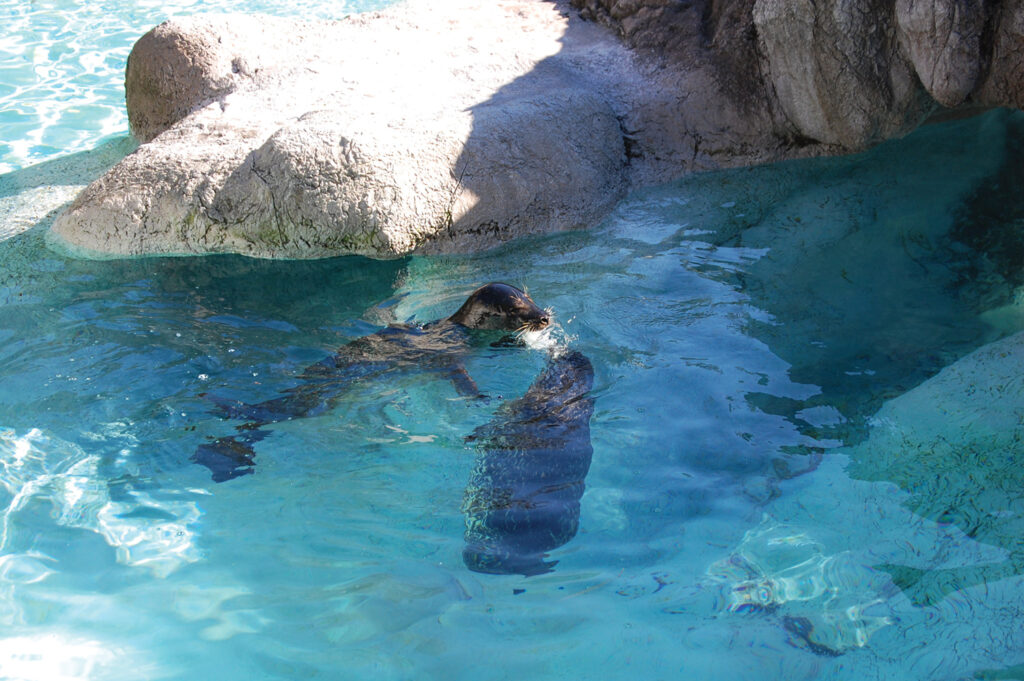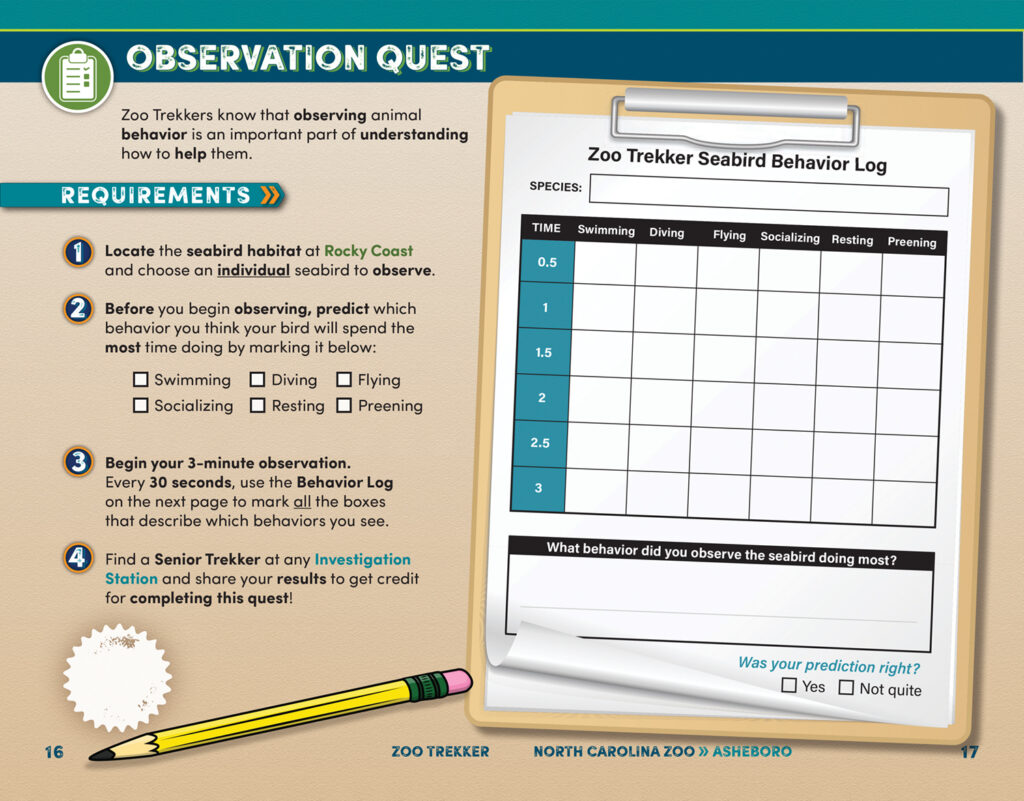Animals, Art and Adventure
Zoo visits are for kids of all ages
BY Christine R. Gonzalez

There is something otherworldly about visiting the North Carolina Zoo in Asheboro.
Zebras and giraffes share a few acres with ostriches. It is such a natural-looking vista. They appear as much at home as if they were on the plains of Africa — a place where most visitors will never actually set foot.
Strolling further along, guests can talk to the elephants and see where the buffalo roam.
The animals are sometimes elusive in the 500 acres utilized out of the 2,600-acre wooded property. But determined seekers are often rewarded. A guest may be disappointed not to see the polar bear swimming in his pool, until one exits to the outside viewing deck and is eye level in the open air with the massive predator.
The nearly 50-year-old state zoo is the world’s largest natural habitat zoo, housing 1,800 animals. It is also highly regarded for the Valerie Schindler Wildlife Rehabilitation Center (WRC), the only center at a zoo in the U.S. working to reintroduce injured native animals to their natural habitat.
Animals released back into the wild include bobcat kits, black bear cubs, bald eagles, river otters, birds, squirrels and rabbits. (The WRC medical facility is not open to the public.)



The zoo is a popular summertime destination for families, including many who make the trek from the Wilmington area.
“We love their natural habitats, their conservation program, and the multiple kid areas. They have a Zoo Trekker pamphlet that has questions and games for kids to answer as they explore. If they complete at least six items, the child gets a souvenir pin,” says Jamie Wrede of Rocky Point. Wrede is the children’s ministries director at Wesleyan Chapel UMC in Hampstead.
The activity guide is designed with 6- to 12-year-olds in mind but all guests are welcome to explore the zoo using these “quests.” Some are centered on observing animal behavior, first guessing what you think they will do, and then observing the animal to record what it did every 30 seconds.
“If a guest is younger than 6, we strongly encourage a partnership with an adult or much older sibling because they will need help completing the activities. There are a range of difficulties for the activities. Some of the challenging quests are actually the top-ranked ones,” says Beth Folta, the curator of education.
The N.C. Zoo has hundreds of thousands of visitors each year, and many have special needs. Each month the zoo has quiet days when no field trips or large groups are allowed, leaving the trek a bit quieter for those who have sensory-overload difficulties. June 20, July 18 and Aug. 15 are quiet days this summer. Be advised that the new Asian exhibit is under construction and there might be noise and beeps.



There are 50 art installations throughout the grounds. Many of the animal statues are miniatures allowing sight-impaired guests to get a better feel of the animals, such as the long neck of the giraffe and the trunk and ears of an elephant.
The zoo plans seasonal activities and aims to make exhibits open to all, but there are parameters listed on the website that patrons should read before bringing electronic chairs and guide dogs. For example, service animals cannot enter the bird enclosure.
A host of yearly activities include a plant sale, discounts for veterans, and events like Canines for Conservation dog shows (free with admission).
Many activities such as the Zoo Trekker, animal feedings and Meet the Keeper training sessions are free with zoo entry. Daily activities are listed online and at habitat locations.



Other behind-the-scenes tours and classes can be viewed and purchased online under the Activities page at www.nczoo.org. Pay close attention to the age restrictions; most are for children over 10, a few are for children as young as 5.
The zoo’s website is full of articles about conservation efforts and daily activities such as a typical day of caring for polar bears, which are solitary animals and very dangerous. It discusses how zookeepers meet the physical and mental stimulation the bears need and shows them scuba diving to clean the Arctic Waters habitat.
Picnics are allowed outside the zoo. Inside there are several restaurants and snackbars serving fried chicken, tacos, burgers, salads, ice cream and more.
There are a variety of levels of zoo memberships. Joining helps with animal conservation efforts and has other privileges, such as entering the zoo before opening time on special occasions. Discounts to a variety of other state-run facilities, including the aquariums, are other benefits.
“We love the N.C. Zoo and go at least once a year if not more,” Wrede says. “Since we are members, we usually do it in two days. We start at North America one day and Africa the other, which helps because you are walking downhill to the junction and can trolley back to parking. You can easily see it all in one day, but we like to leisurely see it all. We can’t wait for the new Asia area.”
The N.C. Zoo and Aquariums are managed by the N.C. Department of Natural and Cultural Resources.
Things to know before you go:
Any children planning to do the extra-cost ropes course must have closed-toe athletic shoes, no sandals or flip-flops.
No outside food is allowed except for baby or toddler specialty food.
The North Carolina Zoo actively supports conservation efforts across Africa, including implementing SMART-based monitoring systems that assist with anti-poaching efforts.
